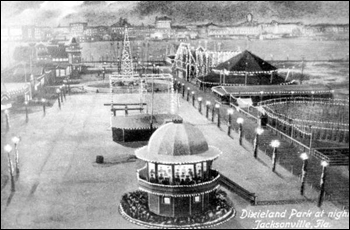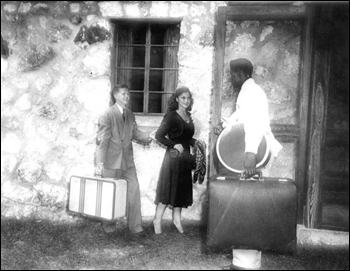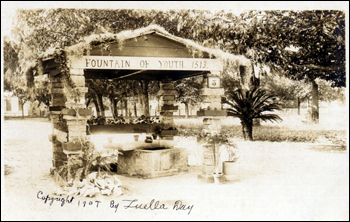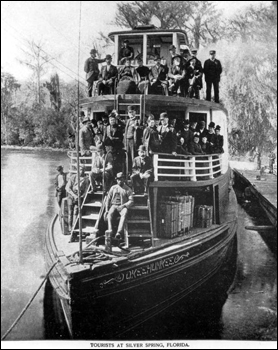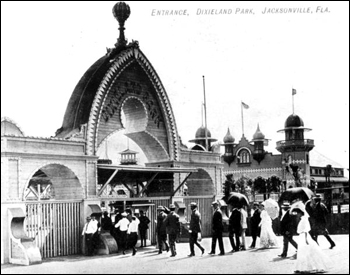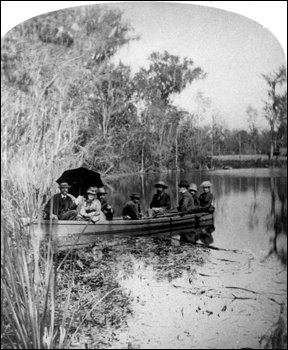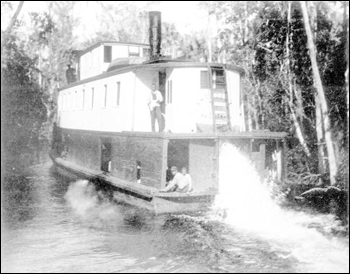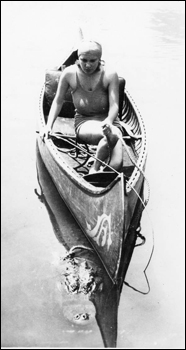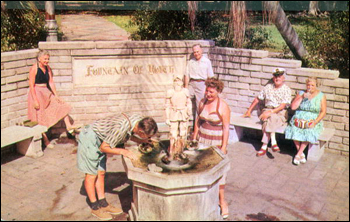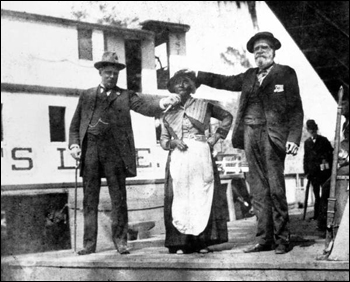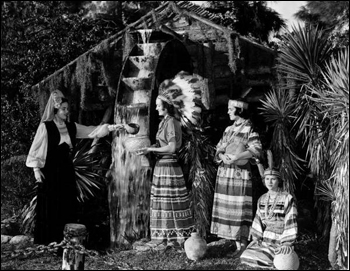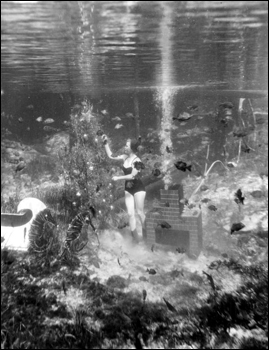Photo Exhibits
Photo exhibits spotlight various topics in Florida history, and are accompanied by brief text intended to place selected materials in historical context.
Roadside Attractions in Florida
Tourism and Spectacle Before Disney
Roadside Attractions in Florida
Tourism is Florida's largest industry. Every year, millions of people from around the world flock to Florida on a quest to see the state's tropical beauty and experience its many theme parks. While many attribute the tourism boom in Florida to the opening of Disney World in the early 1970s, the state's popularity did not happen overnight. Starting in the late 19th century, tourists travelled to Florida to see lush gardens, to peer through glass bottom boats, to see mermaids, and to interact with the exotic environment. The roadside attractions in Florida that pre-date the coming of Disney and the other larger-scale theme parks provided a unique experience for both in-state residents and out-of-state tourists alike. While some are still surviving today, the majority of the homespun roadside attractions no longer exist.
Dixieland Park: Jacksonville, Florida (19--)
Image Number: FR0885
Couple checking into one of the guest cottages: Rainbow Springs, Florida (195-)
Image Number: N041721
"Fountain of Youth 1513": Saint Augustine, Florida (ca. 1907)
Image Number: PC3406
Printed on front: "Copyright 1907 by Luella Day."
This fountain, called the Ponce de Leon Spring, is located on John Whitney's estate, Ravenwood, and was popularized by him as the Fountain of Youth.
Tourists aboard the river steamboat "Okeehumkee": Silver Springs, Florida (188-)
Image Number: RC04904
Entrance to Dixieland Park: Jacksonville, Florida (191-?)
Image Number: RC12001
Party in rowboat at Silver Springs: Ocala, Florida (18--?)
Image Number: RC20138
Steamboat "Astatula" running through the swamp: Marion County, Florida (1892)
Image Number: RC09111
"It is a weird sight to see the boats coming through the swamps with a wood fire on top to light the way, and bows crowded with tourists on their way to Silver Springs."
Saint Augustine Alligator Farm employee Eleana Link using a gator to power her canoe (19--)
Image Number: PR75953
"Fountain of Youth" in Waterfront Park: Saint Petersburg, Florida (19--)
Image Number: PC5677
"The Fountain of Youth, in Waterfront Park, is supplied by a flowing spring of mineral water. Historically, Ponce de Leon visited this area as early as 1313 in his search for The Fountain of Youth."
Aunt Scilla standing beside the "Astatula" at the Silver Springs dock: Silver Springs, Florida (189-)
Image Number: N041779
She made a living telling the legend of the Bridal Chamber. The story was a romanticization of a spring by the legend of a lover's suicide pact.
Young women drink at the "Fountain of Youth" at the Distant Drums premiere: Saint Augustine, Florida (1951)
Image Number: C015656
Underwater Christmas at Rainbow Springs: Rainbow Springs, Florida (1953)
Image Number: SL3187h
Florida Distinction
According to historian Ken Breslauer, Florida's roadside attractions are unique and have a "distinct personality" in comparison to the diners, gas stations, hotels, and amusement parks that people usually associate with the term. A major feature of the roadside attractions in Florida is their use of the state's natural resources to generate a profit. [1] From springs to rivers to wildlife, many entrepreneurs saw profit in Florida's natural surroundings. Florida's roadside attractions are also located near major highways, such as US 1, US 27, and US 41. When tourists started arriving in Florida in droves by the late 1920s, they often travelled along these highways and saw the unique signs and advertisements for the attractions. [2]
The development of Florida's tourism industry coincided with the era of "Jim Crow" and institutionalized racism in the South. As such, the amenities and services offered at Florida roadside attractions, from guided tours and local "storytellers" to porters, drivers, and housecleaners, were often made available through the labor of African-Americans. The exhibit includes images that illustrate the contributions of African-Americans to Florida's early tourist attractions; however, the contexts for some of these examples would be considered exploitive today.
This exhibit showcases images of just a few of the many different roadside attractions in Florida. From springs to gardens to animal attractions, these roadside attractions have become an integral part in creating Florida's unique heritage.
[1] Ken Breslauer, Roadside Paradise: the Golden Age of Florida's Tourist Attractions: 1929-1971 (St. Petersburg, Florida: RetroFlorida, 2000).
[2] Margot Ammidown, "Edens, Underworlds, and Shrines: Florida's Smallest Tourist Attractions," The Journal of Decorative and Propaganda Arts, 23, Florida Theme Issue, 1998, p. 239-259.

 Listen: The Folk Program
Listen: The Folk Program